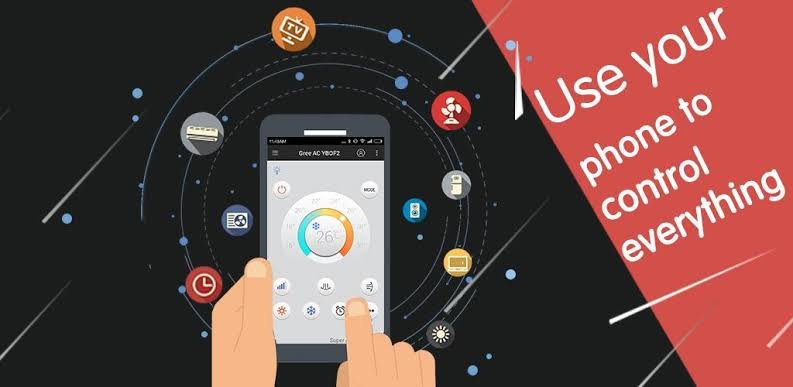The Rise of the Remote Control App: Transforming How We Interact with Technology
The Rise of the Remote Control App: Transforming How We Interact with Technology
In the not-so-distant past, every electronic device came with its own dedicated remote control. Coffee tables became battlegrounds littered with plastic rectangles, each demanding its rightful place. But with the rise of smartphones and tablets, a revolution began. Enter the remote control app, a software solution that transformed our relationship with technology, offering convenience, versatility, and a glimpse into the future of smart homes.
App link
https://play.google.com/store/apps/details?id=com.tiqiaa.remote
This article delves into the fascinating world of remote control apps, exploring their history, functionalities, benefits, and potential drawbacks. We’ll also discuss the future of this technology and how it might further integrate into our lives.
A Brief History of Remote Control Apps
The concept of controlling devices through a mobile phone app isn’t entirely new. Early examples, like rudimentary TV remotes for Symbian phones, emerged in the late 2000s. However, a breakthrough came with the introduction of smartphones and tablets with near-field communication (NFC) and infrared (IR) capabilities. These features allowed apps to directly communicate with devices, replicating the functionality of traditional remotes.
The widespread adoption of smart TVs and other internet-connected devices further fueled the development of remote control apps. Manufacturers began integrating Wi-Fi and Bluetooth connectivity into their products, enabling apps to control them through a network connection. This opened up a world of possibilities, allowing users to not only change channels and adjust volume but also access streaming services, use voice commands, and manage multiple devices from a single interface.
From Simple Remotes to Feature-Rich Hubs
The functionality of remote control apps extends far beyond replicating the physical remote. Here are some of the key features that make them so appealing:
| Feature | Benefit |
|---|---|
| Universal Control | A single app can replace a multitude of remotes, controlling TVs, streaming devices, soundbars, air conditioners, and even smart lights. |
| Advanced Features | Many apps offer features not available on traditional remotes, like program guides, casting functionality, voice search, and parental controls. |
| Customization | Users can customize button layouts, create shortcuts for frequently used functions, and even program macros for complex tasks. |
| Enhanced Accessibility | Remote control apps can be a boon for users with disabilities. Features like voice commands and on-screen keyboards offer greater control and accessibility compared to traditional remotes. |
| Smart Home Integration | Many apps work seamlessly with smart home platforms, allowing users to control their entire home environment – lights, thermostats, security systems – from a single app. |
The Benefits of Using Remote Control Apps
There are numerous benefits to embracing remote control apps:
| Benefit | Description |
|---|---|
| Convenience | No more searching for lost remotes – your phone is always with you. |
| Reduced Clutter | Say goodbye to the remote graveyard on your coffee table. |
| Enhanced Functionality | Unlock features unavailable on traditional remotes. |
| Accessibility | Apps can offer a more accessible way to control devices. |
| Smart Home Integration | Manage your entire home environment from a single app. |
Potential Drawbacks to Consider
While convenient, remote control apps also have some drawbacks to consider:
| Drawback | Description |
|---|---|
| Battery Drain | Constantly running apps can drain your phone’s battery. |
| Compatibility Issues | Not all apps work with all devices. |
| Security Concerns | Connecting to unsecured networks may expose your devices to vulnerabilities. |
| Reliance on Technology | A dead phone or software glitch can render you powerless to control your devices. |
The Future of Remote Control Apps
The evolution of remote control apps is far from over. Here’s a glimpse into what the future might hold:
- AI-powered Control: Imagine an app that learns your preferences and automatically adjusts settings based on the context.
- Gesture Recognition: Control devices with simple hand gestures or voice commands.
- Augmented Reality (AR) Overlays: AR overlays could be used to display information about what’s on screen or provide contextual controls.
- Haptic Feedback: Apps could use haptic feedback to simulate the physical buttons on a traditional remote, providing a more tactile experience.
- Seamless Smart Home Integration: A central hub app could control all aspects of your smart home, creating a truly unified experience.
Conclusion
Remote control apps have become an indispensable part of our digital lives. They offer convenience, versatility, and a glimpse into the future of how we interact with technology. As features continue to evolve and integration with smart homes deepens, remote control apps are poised to take center stage in creating a more seamless and intuitive user experience.


